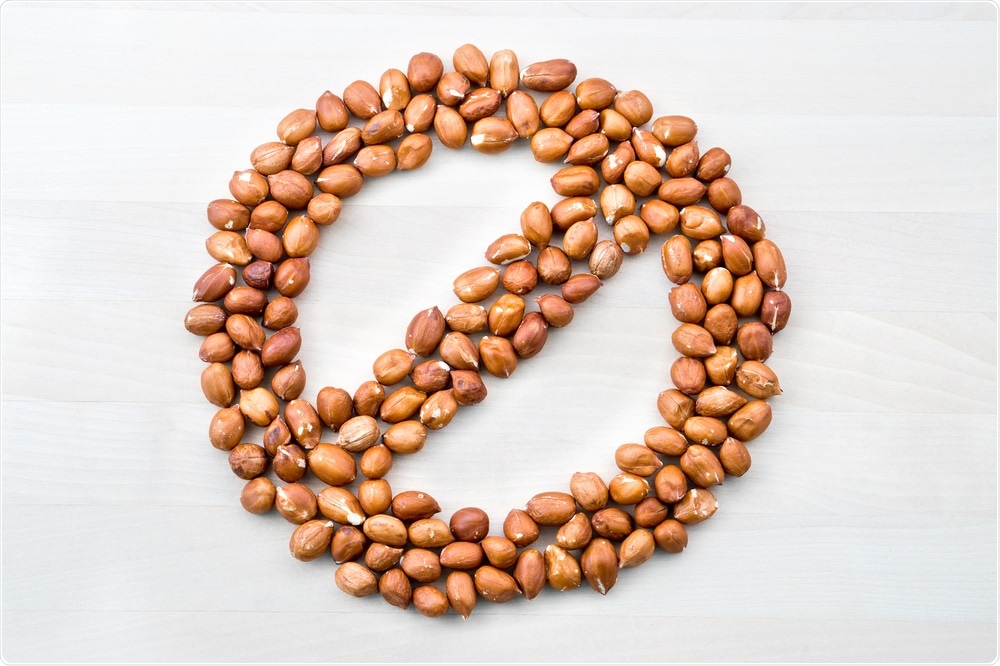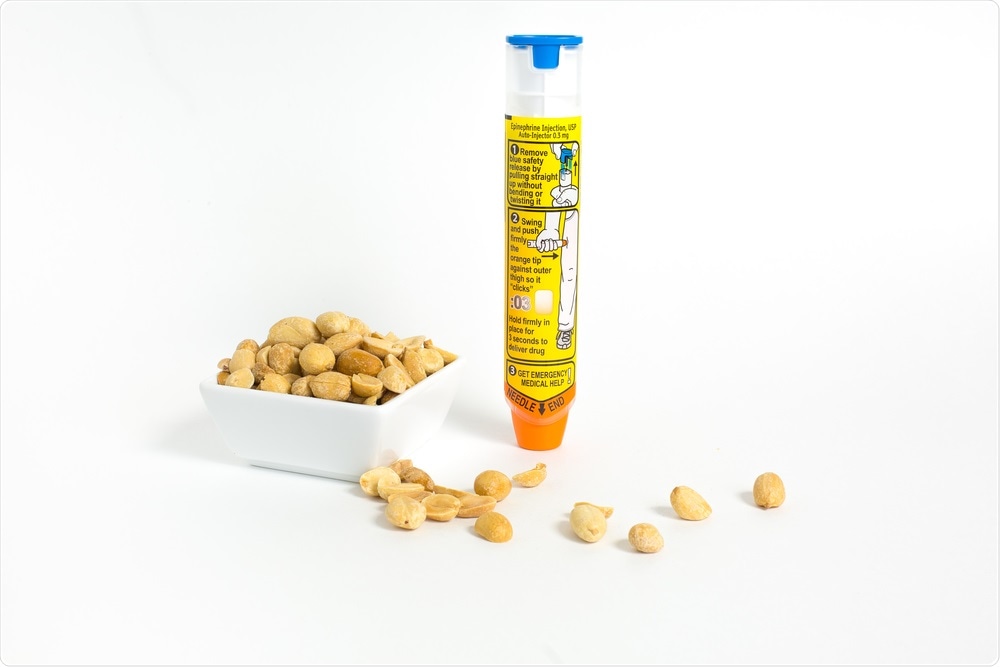Melanie Leung speaks to AZoLifeSciences about the importance of raising awareness of nut allergies, especially in children at Halloween and Easter.
What provoked your research into nut anaphylaxis?
Up to 9% of children have at least 1 food allergy in Canada. Anaphylaxis is the most severe and potentially life-threatening form of food allergy. A majority of anaphylactic cases are related to peanuts and tree nuts. Therefore, public awareness is important.
To have efficient public awareness campaigns, identifying critical periods of the year associated with increased risk of peanut and nut anaphylaxis was needed.

Image Credit: Tero Vesalainen/Shutterstock.com
What are nut allergies and how do they occur in individuals?
An allergy is defined as an abnormal reaction of our immune system against a harmless substance, such as peanuts and nuts. In the case of peanut and nut allergies, it is mostly IgE-mediated (IgE being a type of antibody).
Allergic reactions usually take place within minutes to 2 hours from the time of ingestion.
Symptoms of an allergic reaction are various. They can include:
- Skin: urticaria, pruritus, flushing, edema
- Respiratory: shortness of breath, cough, sneeze, airway obstruction
- Cardiac: hypotension
- Gastrointestinal: nausea/vomiting, abdominal pain
Anaphylaxis is the most severe form of food allergy: it is when an allergic reaction involves at least 2 organ systems or leads to hypotension. It is potentially fatal if not treated appropriately and promptly.
Why are there anaphylaxis spikes in children at Easter and Halloween? Why are these spikes not seen in other celebrations such as Christmas and Diwali?
There are 2 potential hypotheses to this observed phenomenon. The first is that in Easter and Halloween, children often receive candies and treats by people who may not be aware of their allergies.
The absence of such associations during Christmas and other celebrations might be related to the more intimate setting of these holidays: they are celebrated with family members and close friends, who are likely to be more vigilant regarding allergen exposure.
A second hypothesis concerns the Canadian labeling regulations. Currently, in Canada, prepackaged 1-bite snacks, if sold individually, are exempt from labeling requirements, such as labeling of common allergens. These 1-bite snacks are commonly distributed during Halloween and Easter.
Therefore, people might not be aware of potential allergens contained in those treats.

Image Credit: Yuganov Konstantin/Shutterstock.com
Can you describe how you carried out your research and its results?
From 2011 to 2020, we collected data from 1390 pediatric cases of peanut or nut-induced anaphylaxis across Canada (Newfoundland & Labrador, Quebec, Ontario, and British Columbia). 62% of children were boys and the median age was 5.4 years.
We plotted the average daily number of cases during each holiday and compared it to the rest of the year (i.e.: non-holiday period). For peanut-triggered anaphylaxis, there was an 85% increase in daily average cases during Halloween and a 60% increase during Easter compared with the rest of the year.
For anaphylaxis triggered by unknown nuts, there was a 70% increase during Halloween and Easter compared with the rest of the year. However, the researchers did not find an increase at Christmas, Diwali, Chinese New Year, or Eid al-Adha.
***Unknown nuts: when the parents and treating physician were not sure whether the culprit was peanuts or tree nuts and no other potential allergen had been consumed.
How could your research help to raise awareness of increased anaphylaxis during these times of the year?
By identifying critical time points associated with increased risk of peanut and nut anaphylaxis, our research provides information on the best timing for public awareness campaigns.
As an example, given the increased risk of peanut and nut anaphylaxis on Halloween and Easter, our results suggest that public awareness campaigns are needed during those periods.
Why is raising awareness of nut allergies so critical?
Anaphylaxis is the most severe manifestation of food allergy and can be fatal if not treated rapidly and properly. Food-induced anaphylaxis is most commonly caused by peanuts and tree nuts and accounts for most fatal cases in North America.
Raising awareness on peanut and nut allergies is critical to prevent, to act promptly, and to save lives, in the case of anaphylactic reactions.
What can communities do to help support children suffering from nut allergies during these festivities?
- When serving food and treats, ask about allergies.
- Be aware of potential allergens that might be contained in the food.
- Be able to recognize signs of an allergic reaction and anaphylaxis. Call the emergency telephone service in the case of anaphylaxis or a suspected case of anaphylaxis.
- Have readily-available epinephrine treatments (e.g.: Epipen and Allerject) in the community.

Image Credit: Amy Kerkemeyer/Shutterstock.com
What are the next steps in your research?
The next steps in research are to assess the effectiveness of various strategies to increase public awareness on anaphylaxis and its management (e.g.: educational programs, posters, TV ads, enacting laws such as Sabrina's law in Ontario and Bill 201 in Alberta).
Where can readers find more information?
About Melanie Leung
Melanie Leung is a 4th-year medical student at McGill University. Her supervisor is Dr. Moshe Ben-Shoshan, who is a pediatric allergist and immunologist at the MCH (Montreal Children’s Hospital) and a scientist at the Research Institute of the MUHC (McGill University Health Center).
Ms. Leung, Dr. Ben-Shoshan, and numerous physicians and healthcare professionals across Canada are part of the CCARE project (Cross-Canada Anaphylaxis Registry). The goal of this registry is to assess and study anaphylaxis in Canada.